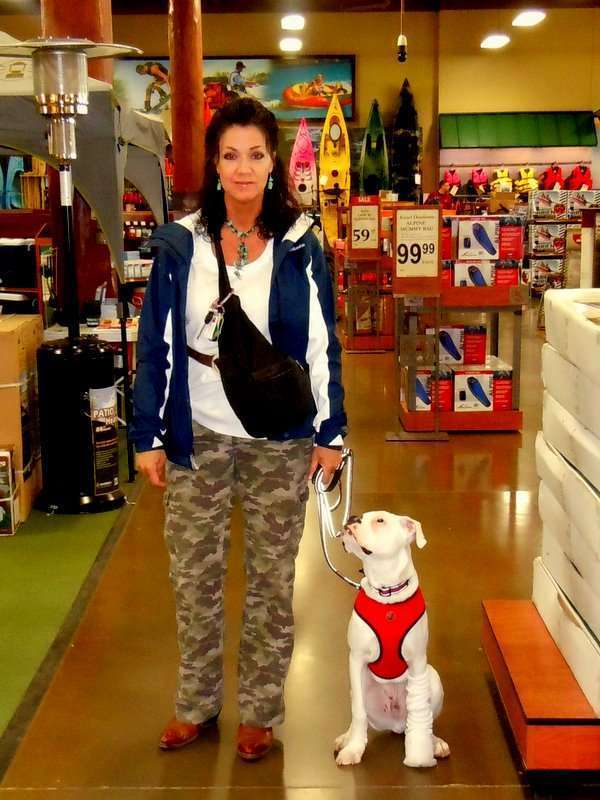Key Takeaways:
- Consistency is key when training a deaf dog. Use visual cues and hand signals consistently to communicate with your dog.
- Positive reinforcement is the most effective training method for deaf dogs. Reward good behavior with treats, praise, or playtime.
- Use a vibrating collar or flashlight to get your deaf dog's attention when you need to redirect their focus or give commands.
- Teach your deaf dog basic obedience commands like sit, stay, and come using hand signals and positive reinforcement.
- Patience and understanding are crucial when training a deaf dog. They may take longer to learn commands, so be patient and celebrate small victories along the way.
Are you a dog lover looking to deepen your bond with your furry friend? Imagine being able to communicate with your loyal companion in a whole new way, even if they can't hear a single word you say. Training a deaf dog may seem like a daunting task, but the rewards are immeasurable. By understanding how to train your deaf dog, you will not only improve their quality of life but also strengthen the unbreakable bond between you. In fact, did you know that deaf dogs are just as intelligent and trainable as their hearing counterparts? With patience, consistency, and some simple techniques, you can unlock their potential and create a harmonious relationship that will leave both of you wagging your tails in delight. So let's dive into the world of training deaf dogs and discover the incredible possibilities that await!
Basic Steps to Start Training a Deaf Dog
Training a deaf dog may seem challenging at first, but with the right approach and patience, it can be a rewarding experience for both you and your furry friend. The first step in training a deaf dog is to establish clear communication methods. Since they cannot hear verbal commands, hand signals become crucial in conveying your instructions.
To begin, choose simple hand signals that are easy to understand and distinguish from one another. For example, you can use an open palm facing up to signal "sit," or a closed fist raised above your head to indicate "stay." Consistency is key when using hand signals, so make sure to use the same gestures every time you give a command.
Introducing Hand Signals
When introducing hand signals to your deaf dog, start in a quiet environment with minimal distractions. Hold a treat in your hand and show it to your dog while simultaneously giving the corresponding hand signal. Repeat this process several times until your dog associates the hand signal with the desired behavior and begins to respond accordingly.
Reward-Based Training
Positive reinforcement is vital when training any dog, including those who are deaf. Reward your dog with treats, praise, or playtime whenever they exhibit the desired behavior after seeing the hand signal. This positive association will motivate them to repeat the behavior in hopes of receiving more rewards.
Using Hand Signals to Communicate with a Deaf Dog
Hand signals serve as an effective means of communication between you and your deaf dog. By using specific gestures consistently, you can convey commands and messages clearly without relying on vocal cues.
Selecting Clear Hand Signals
When choosing hand signals for different commands, opt for distinct gestures that can be easily seen from a distance. For example, raising your hand to your shoulder can represent "come," while pointing towards the ground can indicate "down." Keep in mind that dogs primarily rely on visual cues, so make sure your signals are clear and not easily confused with one another.
Reinforcing Hand Signals
Consistency is crucial when using hand signals to communicate with a deaf dog. Always use the same gestures for specific commands to avoid confusion. Regular practice and reinforcement will help your dog become familiar with the signals and respond appropriately.
The Importance of Positive Reinforcement in Training a Deaf Dog
Positive reinforcement is a powerful tool when training any dog, but it becomes even more critical when working with a deaf dog. Since they cannot rely on verbal praise, positive reinforcement through rewards and affection becomes their primary motivation to learn and obey commands.
Rewards as Motivation
When training a deaf dog, rewards such as treats or toys serve as powerful motivators. Whenever your dog correctly responds to a command or exhibits desirable behavior, immediately reward them with something they enjoy. This positive association strengthens the connection between the behavior and the reward, increasing the likelihood of repetition.
Affection and Praise
In addition to tangible rewards, deaf dogs also thrive on affectionate gestures and verbal praise expressed through body language. Petting, gentle scratches behind the ears, or an enthusiastic pat on the back can convey your approval and reinforce their good behavior.
Overcoming Challenges in Training a Deaf Dog
Training a deaf dog presents unique challenges compared to training a hearing dog. However, with patience, creativity, and adaptability, these challenges can be overcome successfully.
Visual Distractions
Deaf dogs rely heavily on visual cues, making them susceptible to distractions in their environment. To overcome this challenge, start training in a quiet and familiar location with minimal distractions. As your dog becomes more proficient in understanding hand signals, gradually introduce training sessions in slightly more distracting environments.
Building Trust and Focus
Building trust and maintaining focus are essential for effective training. Spend quality time bonding with your deaf dog through playtime, walks, and other activities that strengthen your relationship. When your dog trusts and respects you as their leader, they will be more receptive to learning and following your commands.
Effective Techniques for Teaching Commands to a Deaf Dog
Teaching commands to a deaf dog requires some modifications compared to training a hearing dog. Here are a few effective techniques specifically tailored for deaf dogs:
Use Vibrations
Deaf dogs are sensitive to vibrations, so you can utilize this sense when teaching commands. For example, stomp your foot on the ground or tap on a nearby surface before giving a hand signal. The vibration will capture their attention and serve as an indicator that you are about to give a command.
Pair Visual Cues with Verbal Commands
If you want to incorporate verbal cues alongside hand signals, you can use vibrations from clapping or tapping on the floor while simultaneously saying the command word. This way, even though they cannot hear the words, they can associate the visual cue of the hand signal with the corresponding vibration and command.
Utilizing Visual Cues and Body Language in Training a Deaf Dog
Visual cues and body language play crucial roles in effectively communicating with a deaf dog during training sessions. By utilizing these tools effectively, you can convey your intentions and expectations clearly.
Clear Body Language
When giving commands to a deaf dog, your body language should be clear and consistent. Stand tall, face your dog directly, and use exaggerated gestures to make your signals more distinct. Avoid slouching or turning away from your dog, as it may confuse them or make it harder for them to understand what you want.
Facial Expressions
Your facial expressions can also convey important messages to a deaf dog. Smile when you are happy with their behavior or frown when they need correction. Dogs are highly attuned to human facial expressions and can pick up on these subtle cues.
Safety Considerations for Training a Deaf Dog
Training a deaf dog requires special attention to safety considerations to ensure both their well-being and yours during the training process.
Visual Cues for Approaching
Since deaf dogs cannot hear someone approaching, they may startle easily if touched unexpectedly. To avoid this, establish a visual cue such as waving your hand in their line of sight before approaching them. This gives them a chance to notice you visually before any physical contact is made.
Safety Signals
In addition to training commands, teach your deaf dog specific safety signals that can alert them of potential dangers. For example, teach them a hand signal that means "stop" or "danger" so they know to halt or avoid certain situations.
In conclusion, training a deaf dog requires patience, consistency, and the use of visual cues. By understanding their unique needs and using positive reinforcement techniques, anyone can successfully train a deaf dog to be well-behaved and happy.
Is it difficult to train a deaf dog?
Training a deaf dog requires more careful consideration and preparation compared to training a hearing dog, but the underlying principles are the same. The main difference is that a slightly different form of communication is used. Hearing dogs learn commands by repeatedly hearing specific words that are associated with certain actions.
How do you discipline a deaf dog?
Instead of using a clicker to indicate correct behavior, you can use an open flash of your hand or a thumbs up sign. Don't forget to smile and praise your deaf dog when they understand the "leave it" sign. Deaf dogs are highly perceptive to our facial expressions and body language.
How do you give a deaf dog commands?
To begin teaching different sign cues, provide the specific sign cue you want the dog to do, entice the dog into position with a high-value treat (such as Light Bologna cut into small squares), give a visible hand signal or a thumbs up when the dog performs the desired action, then reward with a treat. Practice this process repeatedly.
Can deaf dogs hear a dog whistle?
If your dog is completely unable to hear, it is important to keep him within a fenced area or on a leash when outside. However, some deaf dogs are still able to hear certain high-pitched frequencies, such as a dog whistle. If your dog falls into this category, it is recommended to use a dog whistle and reward his response.
Are vibration collars good for deaf dogs?
With proper care and training, deaf dogs can live joyful and satisfying lives. It is essential to use specific training methods for deaf dogs to ensure their safety and overall health. Many professionals suggest using a collar that produces vibrations to aid in communication and training for these dogs.
How do you make a deaf dog happy?
Make sure to keep your dog on a leash and take him out to enjoy walks on the trails. He will enjoy the exercise and so will you. Inform others that your dog is deaf and ask them to be cautious not to startle him. Be a caring advocate for your deaf dog, use hand signals to communicate and reward him with treats to show off his new skills.

















